gardening for bats
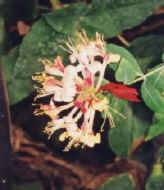
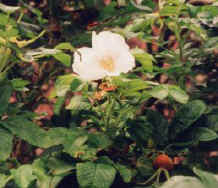 Although
there is no guaranteed way of attracting bats to a garden, careful planning
will increase its value to wildlife. A variety of animal visitors will
be attracted, from insects to birds, and hopefully bats will be among
them.
Although
there is no guaranteed way of attracting bats to a garden, careful planning
will increase its value to wildlife. A variety of animal visitors will
be attracted, from insects to birds, and hopefully bats will be among
them.
All British bats feed on insects. They need a continuous supply of food
during the summer and a wide choice of places to roost, or shelter, throughout
the year. By choosing to garden organically you will increase the number of
insects and wildlife.
Before planning any changes look beyond your garden at what bats
already have access to nearby. Try to enhance what is available, for bats live
and feed over a relatively wide area. If you are lucky enough to have a bat
roost on your property then their droppings are an excellent fertilizer! In many
parts of the world where larger bats are found in greater numbers it is
harvested and sold commercially.
Nicky's
Nursery sells a "Bats In The Garden" seed mixture.
In 2001 The Mammal Society
asked members of the public to join in with their Garden Mammal Survey. As you
can see from the bar graph, bats were the 5th most common species in gardens.
They found that the availability of food and shelter for wildlife were critical.
The most popular gardens for mammals were large and had fruit, nut-bearing
bushes, trees, overgrown areas, and were surrounded by woodland or farmland.
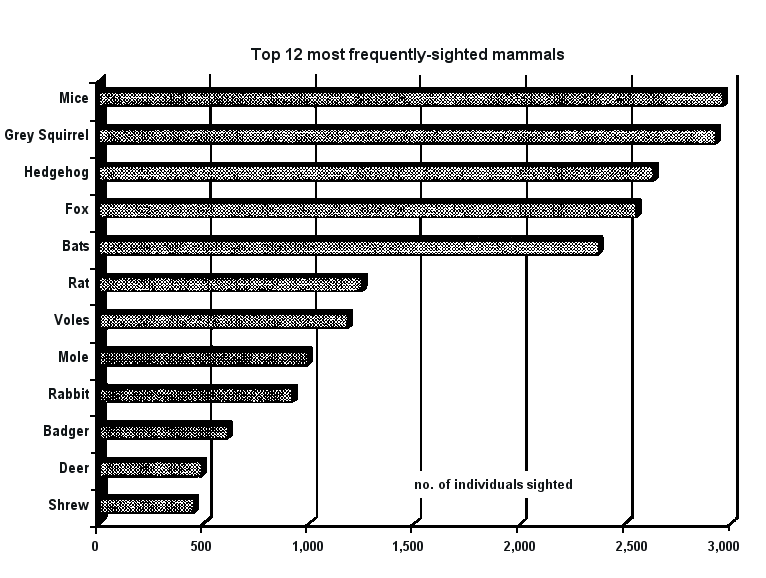
bedding plants
nottingham catchfly
(silene nutans)
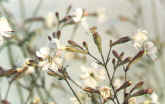 |
night-scented catchfly
(silene noctiflora)

|
bladder campion
(silene cucubalus)
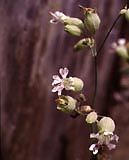 |
night-scented stock
(matthiola bicornis)
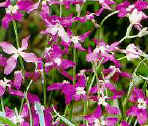 |
sweet rocket
(hesperis candidissima)
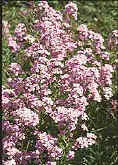 |
evening primrose
(cenothera biennis)
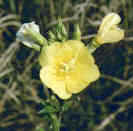 |
tobacco plant
(nicotania alata)
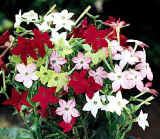 |
cherry pie
(heliotropium arborescens)
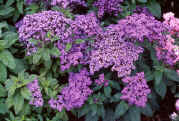
|
soapwort
(saponaria officinalis)
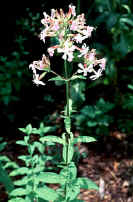 |
scented herbs
chives
(allium schoenoprasum)
 |
Borage
(borago officinalis)
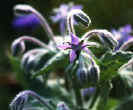
|
lemon balm
(melissa officinalis)
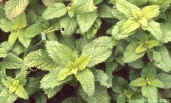
|
marjoram
(marjoram hortensis)
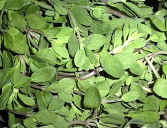 |
mint e.g. spearmint
(mentha spicatat)
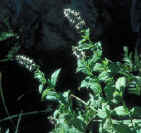
|
|
climbers
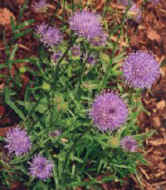 Larvae
and adults of many insects will be catered for by introducing a wide range
of food, in the form of nectar, seeds, and fruit as well as vegetation.
Grow night-scented flowers. These attract moths and other night-flying
insects of particular importance to bats. Plant herbs and old-fashioned
cottage garden annuals attractive to insects. Leave part of your lawn
unmown from about mid-May to encourage insect larvae which feed on grass.
Allow it to seed before cutting and rake up the hay afterwards. Sow wildflower
seed collections in your borders.
Larvae
and adults of many insects will be catered for by introducing a wide range
of food, in the form of nectar, seeds, and fruit as well as vegetation.
Grow night-scented flowers. These attract moths and other night-flying
insects of particular importance to bats. Plant herbs and old-fashioned
cottage garden annuals attractive to insects. Leave part of your lawn
unmown from about mid-May to encourage insect larvae which feed on grass.
Allow it to seed before cutting and rake up the hay afterwards. Sow wildflower
seed collections in your borders.
trees & shrubs
oak
(quercus robur)

|
ash e.g. rowan
(sorbus aucuparia)
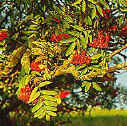
|
silver birch
(betula pendula)

|
field maple
(acer campestre)
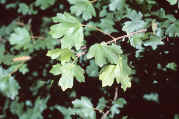
|
hawthorn
(crataegus monogyna)
 |
alder
(alnus glutinos)
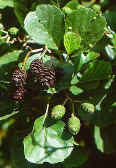 |
goat willow
(salix caprea)
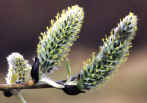
|
guelder rose
(viburnum opulus)
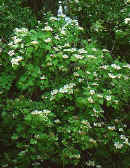 |
hazel
(corylus avellana)
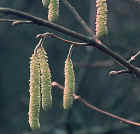 |
blackthorn
(prunus spinosa)
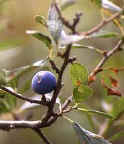 |
elder
(sambucus nigra)

|
buddleia
(e.g. buddleia davidii)
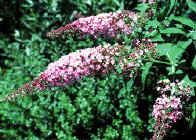 |
At woodland edges space and sunshine combine with trees to give shelter and
warmth, and insects will concentrate there. So, even in the smallest garden try
to have at least one tree or shrub. native trees are more attractive to insect
than foreign species.
If space is limited, silver birch and goat willow are quick-growing and are
host to many insects. With a little more space try to make a bank of vegetation
to give your garden a woodland edge structure.
shelter belts
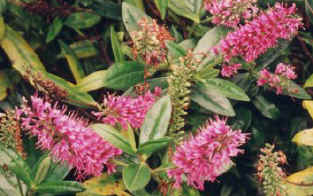 Rows
of bushes or trees can be created or improved, encouraging concentrations
of insects and providing a feeding area for bats. Plant up gaps in natural
hedges. A row of fast-growing cypruses can be valuable.
Rows
of bushes or trees can be created or improved, encouraging concentrations
of insects and providing a feeding area for bats. Plant up gaps in natural
hedges. A row of fast-growing cypruses can be valuable.
Train climbers using battens against a wall or fence to provide possible
roosting sites. Create a sheltered corner by using any combination of
walls, fences, hedges or woodland edge at two angles.
a pond
Many insects start life in freshwater, emerging only as adults. As one Pipistrelle
may eat up to 3,000 such insects in a night, a pond is an important part of any
garden designed to attract bats.
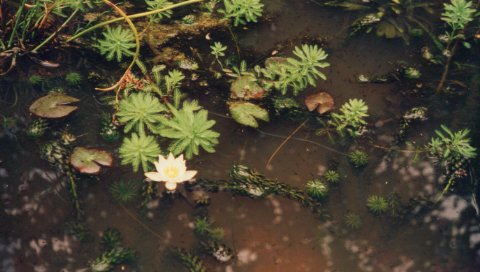
If you are concerned for the safety of small children, make a pond in the
normal manner and then fill it in to form a marsh. An old leaking concrete pond
can also be converted into a marsh. Construction details are available in many
wildlife gardening books.
habitat piles
A pile of logs left undisturbed in the shrubbery or a corner of the garden
to rot will become home to a host of insects and other creatures.
rockeries
ivy-leaved toadflax
(cymbalaria muralis)
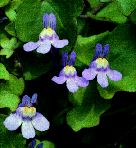 |
wall pennywort
(umbilicus rupestris)
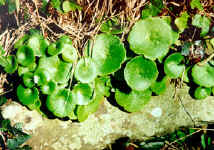 |
stonecrop
(sedum ternatum)
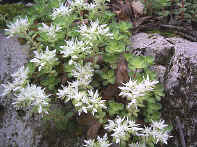 |
Build a rockery on the principle of drystone walling. A double-sided
wall, filled with stones and incorporating very little soil can become
an attractive feature as mosses and lichens colonise it. The spaces will
be available as roost sites for bats, as well as home for some of the
invertebrates on which they feed. Alternatively, an earth bank faced with
drystone walling may be more suited to your garden. Leave cavities in
the centre as well as plenty of small holes in the facing.
Bat boxes
As artificial tree holes, bat boxes offer an additional option for bats
searching for a roost site. Entrance is usually by way of a narrow slot
underneath.